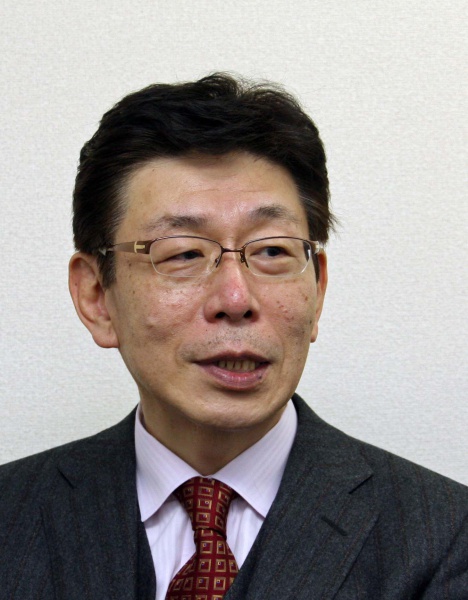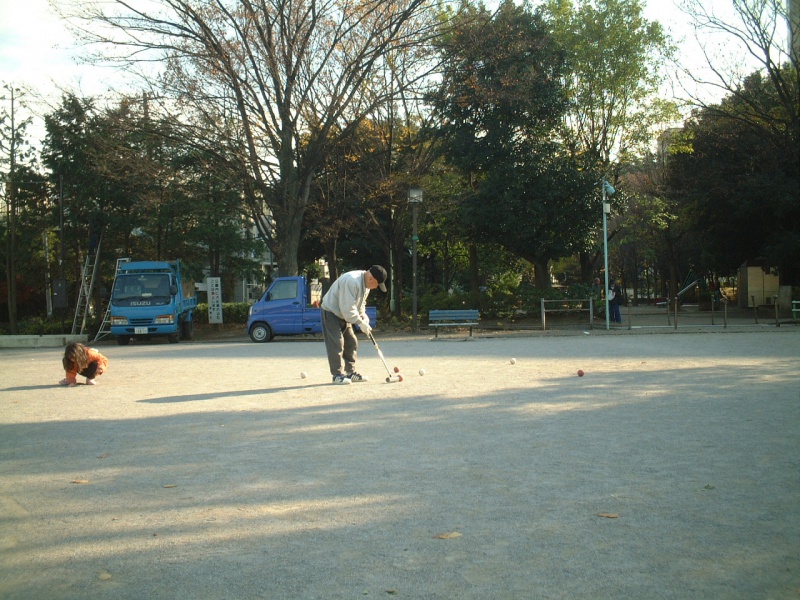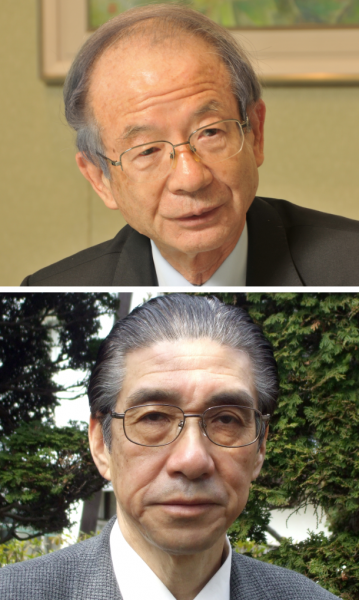Will Exports, the Japanese Economy’s Cleanup Hitter, Recover?
Finally, the consumption tax rate has been raised. On the morning of April 1, I saw that the prices of newspapers had gone up. Fares for JR trains had been changed, and there were digits other than zero. The minimum fare for a taxi ride in Tokyo had also risen to ¥730. At a family restaurant the menu had changed completely. I ordered eggs benedict since it was unusual to find the dish in a Tokyo restaurant. But the next moment I said to myself, “Ah, this new item on the menu was only to camouflage the price hike.” Tsk, tsk. I had just spent ¥704 on breakfast.

YOSHIZAKI Tatsuhiko, Chief Economist, Sojitz Research Institute, Ltd.
Increases in costs are everywhere. Typical for Japan, there was little confusion. So, what will the economy be like? I expect that the consumption tax hike will have adverse effects.
Every time I have been asked about the ramifications of the consumption tax hike, I answered with the following: “The effect of the consumption tax hike is minor. The increase in revenue due to the consumption tax hike will be ¥2.5 trillion multiplied by 3(%), which is ¥7.5 trillion. Meanwhile, a ¥5.5 trillion supplementary budget has been compiled. The increase in the burden on the people is therefore only ¥2 trillion and the economy can absorb that amount.” At least the current situation is considerably different from what occurred in the spring of 1997 when the government rashly raised the consumption tax rate from 3% to 5% to improve the budget balance. The Japanese government has seemingly grown a little wiser.
From a macroeconomic perspective, the above is my opinion of the rise in consumption tax. However, from a micro perspective, price increases will hurt consumers. As last-minute demand up until March was more sizable than expected, to some extent we have to be prepared for a decline in reaction to that demand. The results of the Tankan Survey (Short-Term Economic Survey of Enterprises in Japan) announced on April 1 fell short of the market expectation, which indicates that management remains cautious.
What will the Japanese economy be like in FY2014? Simply put, I expect that the economy will depend on exports. Recoveries in the Japanese economy have been driven by exports. And in Japan the typical pattern has been that the household sector does not recover despite an improvement in the corporate sector, and personal spending does not grow. The current recovery phase is the other way around. Personal spending has been strong since the start of Abenomics and public investments have propped up regional business activities. However, exports have not increased as expected despite a weaker yen while imports have increased backed by strong domestic demand. As a result, net exports fell into negative territory which is dampening economic recovery.
The current situation of the Japanese economy can be likened to the batting order of a baseball game in which runs are scored thanks to the first place hitter, the second place hitter, and the hitter at the bottom of the lineup who is currently in a slump. Let’s hope that in this season that slugger will break out of his slump.
As an economist with a long term association with a trading firm, the author is very surprised by changes in trade. Foreign trade statistics in February show that exports are ¥5.8 trillion and imports are ¥6.6 trillion which resulted in a trade deficit of ¥0.8 trillion. This was the 20th consecutive month for a trade deficit and Japan has now posted trade deficits for three consecutive calendar years. In 2013 exports were ¥69.8 trillion and with imports at ¥81.3 trillion yen the resulting trade deficit was ¥11.4 trillion. This means that in every month for the past year Japan recorded a ¥1 trillion trade deficit.
I imagine that in social studies classes at elementary schools and junior high schools nationwide students are taught that Japan’s trade pattern is actually processing trade: Japan imports raw materials and exports products. Students are probably also taught that Japan has a small land area with a large population and needs to exports industrial products to secure food and energy. They may also teach about trade friction, that is, statements from foreign countries that bash Japan for its trade surplus which they say has cost jobs.
This kind of knowledge is rapidly becoming outdated. Let me explain what is happening now in the area of trade.
First, imports of mineral fuels which account for a third of all imports, have been increasing. LNG (Liquefied Natural Gas) imports were ¥7.1 trillion in 2013, twice as much in 2010 before the earthquake. This is what electric power companies often refer to as a ¥3.6 trillion increase in the burden on the people associated with the shutdown of nuclear power plants. If nuclear power plants do not restart over ¥3 trillion of national wealth will continue to flow out of Japan annually. My opinion is that nuclear power plants which have been confirmed as safe should resume operations although I know that many people have different opinions on this matter.
An increase in product imports is also remarkable. For example, communication devices were one of the leading products exported, but imports of smartphones and tablets have been rising sharply. Currently, imports of communication devices are ¥2.7 trillion versus exports of ¥530 billion. In this high-tech field Japan has a trade deficit of over ¥2 trillion.
Imports of clothing and accessories have also been increasing and amount to roughly ¥3.2 trillion yen. However, luxury brands to lower priced items of clothing made in Japan have become rare.
For the first time last year, imports of automobiles exceeded ¥1 trillion. Now foreign cars are selling against a backdrop of increasing consumption.
Surprisingly, imports of pharmaceutical products have risen sharply to ¥2.1 trillion, though Japanese people have not been buying lots of Viagra. It turns out that imports of anti-flu medicine have increased remarkably.
Symbolically, Apple’s iPhone (communication devices), Uniqlo (clothing), Mercedes-Benz (automobiles), and Relenza (drugs) are the main factors for the increase in imports. These are typical of the strong brand names and high value-added products regularly imported.
Japan was once criticized for having a number of non-tariff barriers but now imports global products in the usual manner. Consumers’ options have expanded and the economy’s productivity has improved. Taking all this into consideration I feel that the structural adjustments for reducing the trade surplus which the Maekawa report aimed for in 1986 have been achieved at last.
I am worried though about the sluggish growth in exports. Despite a weaker yen, export volumes show only a modest increase of late. Why? I assume it’s because of the following four reasons:
First, production bases have moved overseas. Relocations of production bases overseas accelerated especially after the earthquake due to a stronger yen and concern over the electric power supply. This trend will not change even if a weaker yen continues for a year. In the auto industry, which needs a large number of components, people are saying, “Capital expenditure projects that are starting now were planned when the yen was very strong.” Domestic capital expenditures have just started to increase slightly. Perhaps they’re thinking, “We haven’t gotten serious yet.”
Second, capacity to export is limited due to strong domestic demand. The steel industry, among other industries, has reduced its supply capacity in anticipation of a shrinking of the market caused by population decline. However, domestic demand rose rapidly last year, and there is a lack of capacity to export which is an unusual situation. In this respect, a slowdown in domestic demand from April due to the consumption tax hike will likely give an opportunity for export expansion.
Third, production capacity has increased at Japanese companies’ overseas production bases and the local content rate utilized has risen. This means there isn’t any need to send capital goods or parts from Japan. This is good news for Japanese companies, although they’ll have to reduce exports from Japan, the situation still means that their competitiveness has improved.
Fourth, emerging economies which are expected to be export destinations from Japan have changed. Last year skyrocketing growth in the BRICS slowed, and growth in advanced economies is taking center stage. In 2013, exports to the United States from Japan (¥12.9 trillion) exceeded exports to China (¥12.6 trillion) for the first time in five years. This means that the U.S. economy was strong, while the Chinese economy was not quite as hardy. So, what does all this mean? We need to carefully watch our trading partners.
Geopolitical risk, such as the crisis in Ukraine, isn’t likely to affect Japan’s major trading partners directly. Of the “Fragile Five,” Indonesia, which has the closest ties with Japan is recovering the fastest and this is encouraging.
My conclusion is that April of FY2014 will be a make-or-break period for exports. In association with that, the fate of Abenomics in its second year depends on trade. I also do not agree with the opinion that the Japanese manufacturing industry has been hollowed out and is finished. The veteran cleanup hitter of a good team will survive after people begin to say that he cannot go on any longer. I believe that the Japanese manufacturing industry is just like that cleanup hitter.
Translated from “Nihon Keizai no Yobandasha, Yushutsu wa Fukkatsu dekiruka? (Will Exports, the Japanese Economy’s Cleanup Hitter, Recover?), Toyo Keizai ONLINE, April 4, 2014, http://toyokeizai.net/articles/-/34563. (Courtesy of Toyo Keizai) [April 2014]




